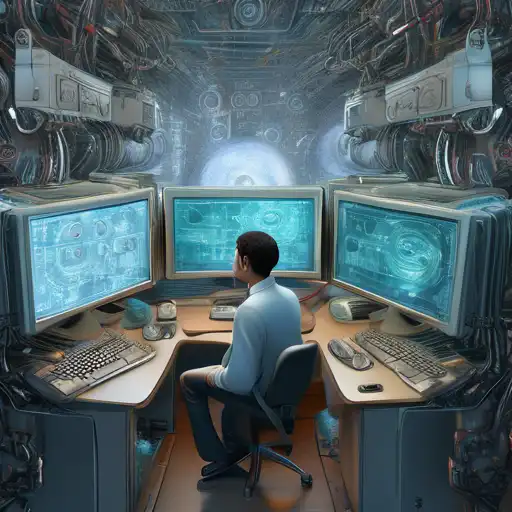Introduction to Computer Vision
Computer vision is a field of artificial intelligence that trains computers to interpret and understand the visual world. By leveraging digital images from cameras and videos and deep learning models, machines can accurately identify and classify objects—and then react to what they 'see'.
How Computer Vision Works
At its core, computer vision involves the automatic extraction, analysis, and understanding of useful information from a single image or a sequence of images. This process involves several steps, including image acquisition, processing, analysis, and understanding.
Key Technologies Behind Computer Vision
- Image Processing: Enhances the quality of images to prepare them for analysis.
- Machine Learning: Algorithms learn from data to make predictions or decisions without being explicitly programmed.
- Deep Learning: A subset of machine learning, where neural networks with three or more layers are used to model complex patterns in data.
- Pattern Recognition: Identifies patterns and regularities in data.
Applications of Computer Vision
Computer vision has a wide range of applications across various industries. Here are some of the most impactful ones:
- Healthcare: From detecting diseases in medical images to assisting in surgeries.
- Automotive: Powers self-driving cars to understand their surroundings.
- Retail: Enhances shopping experiences with virtual try-ons and automated checkouts.
- Security: Improves surveillance systems with facial recognition and anomaly detection.
Challenges in Computer Vision
Despite its advancements, computer vision faces several challenges, including the need for large amounts of training data, high computational costs, and issues with accuracy in varying lighting conditions or angles.
The Future of Computer Vision
The future of computer vision is incredibly promising, with ongoing research focusing on improving accuracy, efficiency, and applicability. As technology advances, we can expect computer vision to become even more integrated into our daily lives, transforming industries and creating new possibilities.
For more insights into how artificial intelligence is shaping the future, check out our article on AI Advancements.
